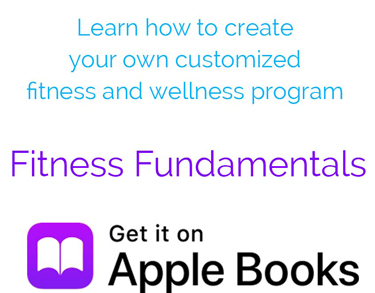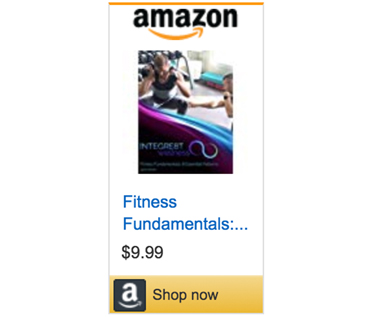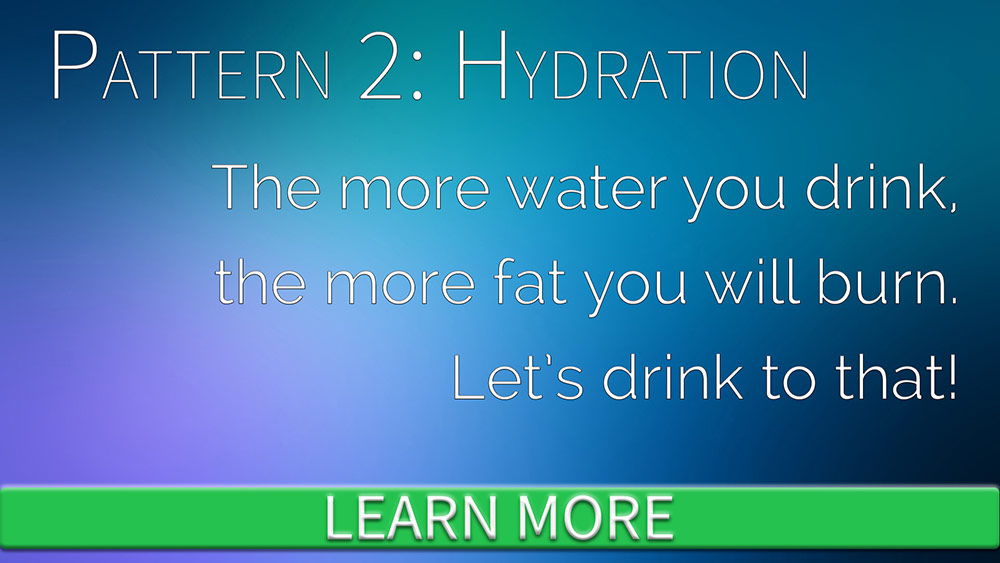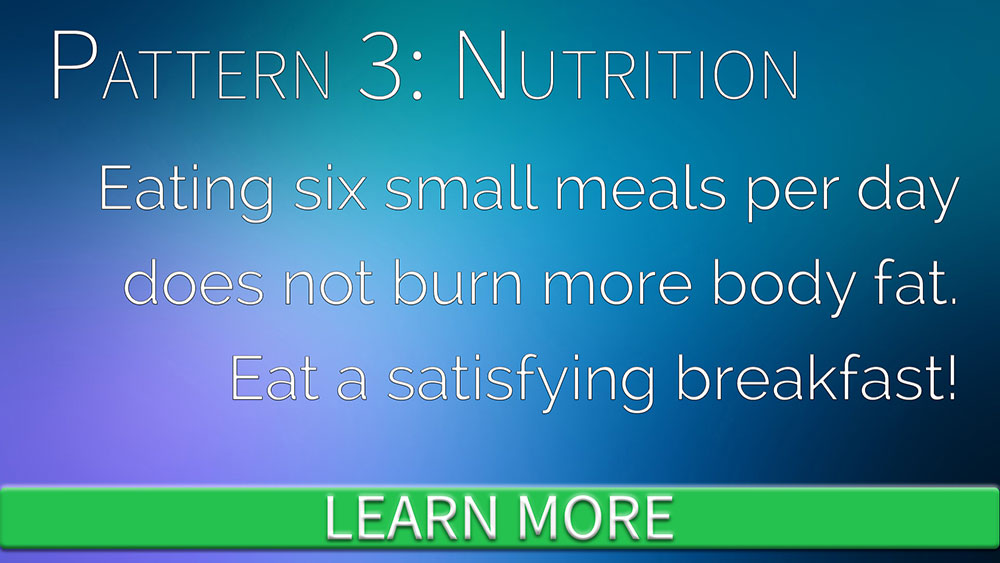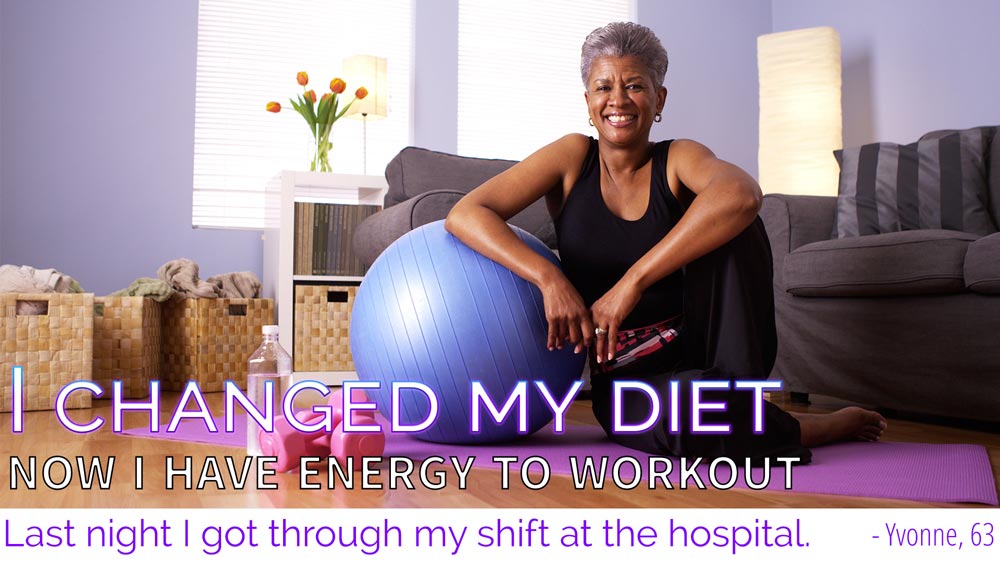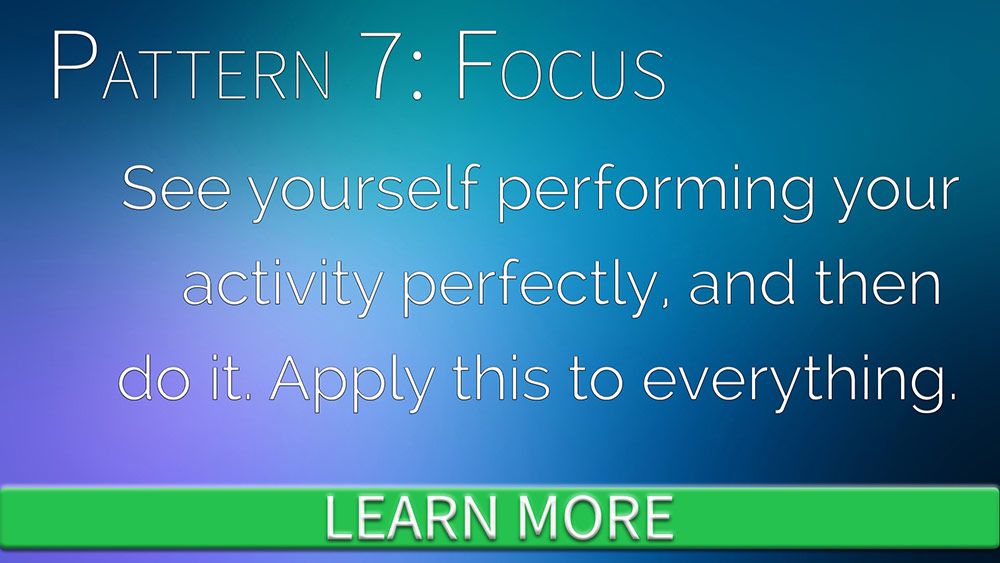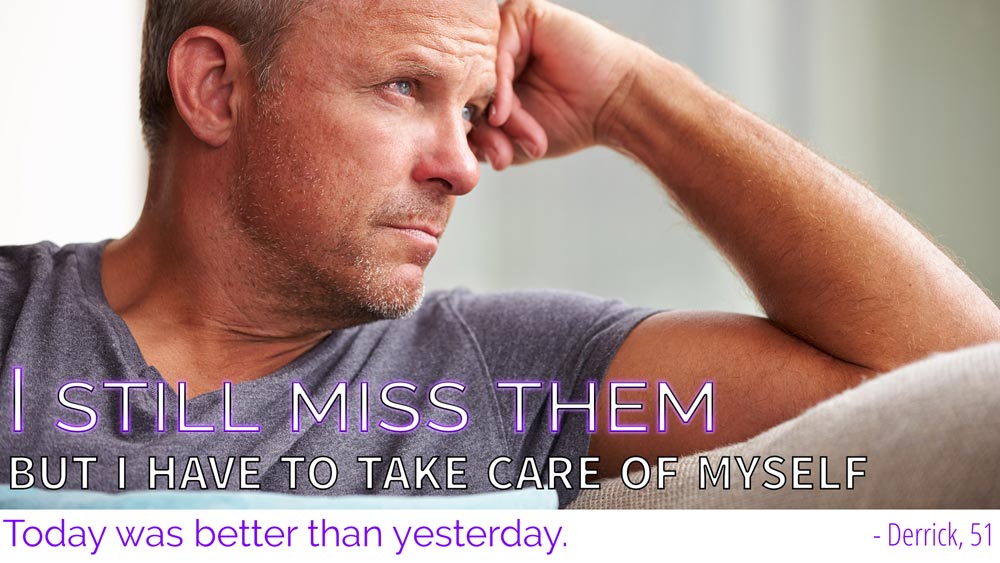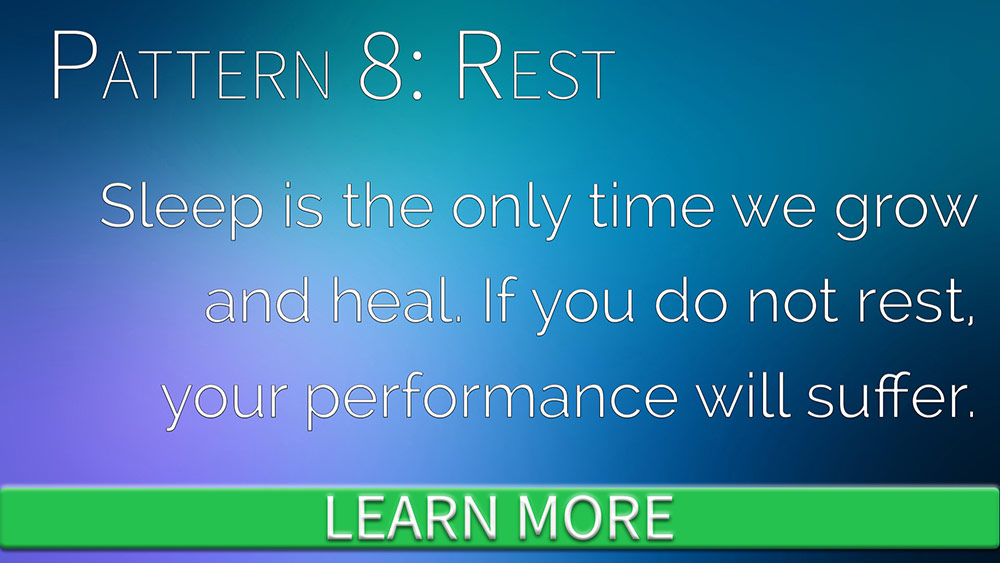The 8 Patterns of Fitness
#8Patterns1Lifestyle
Wellness and fitness are interconnected. This page briefly describes the components of Physical Wellness that form the basis of this program, and suggests how they are all woven together. All of these patterns influence the balance or imbalance in the others, so be sure to address all of them as you build a healthy lifestyle. This is the non-secret of the great gains you get when you INTEGRE8T Wellness!
#8WeeksInfiniteProgress
I help people make gradual improvements to each of these, so that longterm habits have a chance to take hold. After a relatively short time of consistent effort, you will begin seeing improvement. Building upon this progressional advancement over time, you can make gains for the rest of your life! Put the 8 on its side, and you get ∞. Learn more about The 8 Modalities of Wellness.
Pattern 1: Breath
Of all the patterns, breath is the most fundamental. Stop what you’re doing, and take 8 purposeful breaths. According to Dr. Matthew MacKinnon, MD, it can work wonders; however, those breaths can be even more effective if you breathe from your belly. If your belly is still and your chest is inflating and deflating, take some time to relearn how to breathe properly. Pull your breath in deeply and slowly. Focus on inflating your belly first, and then allow your chest to also inflate. You will get more oxygen, and greatly amplify the benefits of this fundamental pattern. Learn more about breath.
Pattern 2: Hydration
You already know what I’m going to say: Drink lots of water. But the reasons for it are so sweeping that it cannot be stressed enough. Dehydration undermines all the other patterns. Here are 34 reasons to DRINK LOTS OF WATER. If you want a very specific reason, consider that water is necessary for the metabolism of energy. That includes fat. Researchers at the University of Michigan found that the more water you drink, the healthier height-weight ratio you can expect. Let’s drink to that! Learn more about hydration.
Pattern 3: Nutrition
You may hear people suggest that you eat six small meals each day, but you are an individual with specific needs. Medical doctors say this generalized advice may not be appropriate for your goals. When you eat, insulin is released. It stores energy. If you are always eating, you never stop releasing insulin, so you’ll never stop storing energy. Also, eating small meals means you may never reach satiation, and might never feel content. This pervasive sense of hunger can encourage binging, and that can undermine the whole point of grazing throughout the day. Allow time between meals, so that your body has a chance to use the calories it has stored. Eat enough, so that you don’t need to snack: The six-meal patterns are often better for those who wish to gain weight, not lose it. If you find you still need to fill gaps in your nutrition once you’re diet is improved, you can finally look at using supplements. Once you get to that point, I suggest you begin stacking them yourself at home. Learn more about nutrition.
Pattern 4: Strength
When you are training, focus on compound movements at the beginning of your session. Graduate to isolations later. Compound movements require effort across multiple joints. They engage far more muscles simultaneously, and develop deep, functional strength. The glamorous surface muscles get most of the attention, but the muscles we cannot see are the ones that actually work more efficiently. They provide foundation and stability, and allow the pretty muscles to be pretty. Learn more about strength.
Pattern 5: Conditioning
For far too long people have been running themselves half to death trying to burn fat. Stop that. Jogging lackadaisically for an hour can cause you to gain fat and lose muscle, and that’s probably the opposite of your goals. The ACSM endorses the practice of working far harder for much less time. Your body will respond by shedding fat and building muscle. Interval training is an excellent example, and I know many patterns of time ratios to keep you challenged. You’ll get so much of your time back, too! Learn more about conditioning.
Pattern 6: Flexibility
Experts at Human Kinetics explain that for the body to be healthy, it should be not only strong but also supple. Too much strength without enough range of motion leads to injuries due to impingement of joints. Not enough strength and too much flexibility leads to injuries caused by instability. A balance has to be maintained, which means that flexibility training is just as important as the other components of fitness. Yoga is an excellent choice, because it develops strength, endurance, flexibility, and focus simultaneously. If that isn’t for you, then use dynamic movements to warm up, and use a foam roller to cool down. Keep your muscles strong AND long. Learn more about flexibility.
Pattern 7: Focus
Intention is a tool that too often gets neglected. Focus your mind to imagine the results you want. See yourself performing your task perfectly, and then do it. The American Psychological Association has shown that optimism and happiness help with visualizing your goals, and they can drastically improve your performance. This applies not only to exercise, but to practically everything in our lives. Hear the note before you sing it. See the pirouette before you dance it. Choose the right word before you say it. Imagine yourself bulging before you press the weight. Our busy and stressful lives pull us away from our inner selves. Be sure to make time to remember what it is you are doing, why you need or want to do it, and then put your inspiration into action. Learn more about focus.
Pattern 8: Rest
I highly recommend that you read “Why is Sleep So Important to Your Mental and Physical Health?” It’s a highly informative article by Jim Dillan of SuperFoodProfiles.com. Helen Sanders curated it for HealthAmbition.com, and it beautifully summarizes the most salient points about the benefits of getting appropriate sleep (as well as the risk factors of having too much or too little). The lists and graphics make this densely informative synopsis an easily digestible learning tool. Also, research from 2012 shows the brain needs sleep to purge itself of the toxins and proteins that can increase the risk of dementia and Alzheimers.
Bear in mind that rest also applies to taking days off from work, programming non-exercise days into your regimen, pausing the right amount of time between sets, and spending time with your favorite people and pets. Rest is the only time we heal and grow. If you do not rest as well as you work, you will eventually fall apart. And that’s the truth. Learn more about rest.
Questionnaire
New Clients: Please submit your health history prior to our first appointment- Be thorough and specific
- Feel free to ask questions
- Submit 24 hrs. before Evaluation
Evaluation
Onboarding Clients: Please be dressed to move on an open and level floor- Bring water, SPF, hat, towel, etc.
- Purchase subscription within 30 days:
- Get $100 credit = FREE Evaluation!
Coaching
Current Clients: Select subscription and start saving!- Bring water, SPF, hat, towel, etc.
- If you journal, please share it
- Early Cancellation = +24 hours
